Garnett Mountain Peak
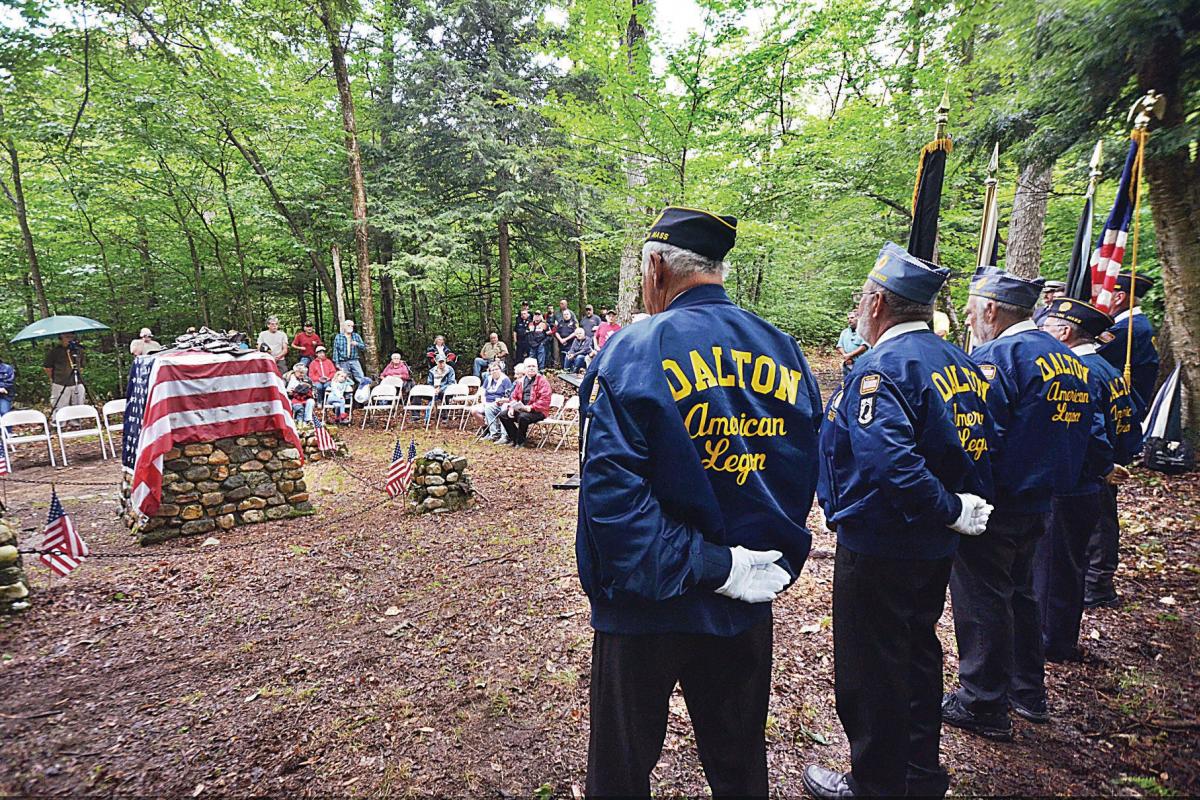 75th Anniversary -Peru residents remember paratroopers lost in 1942 plane crash on Garnet Peak
75th Anniversary -Peru residents remember paratroopers lost in 1942 plane crash on Garnet Peak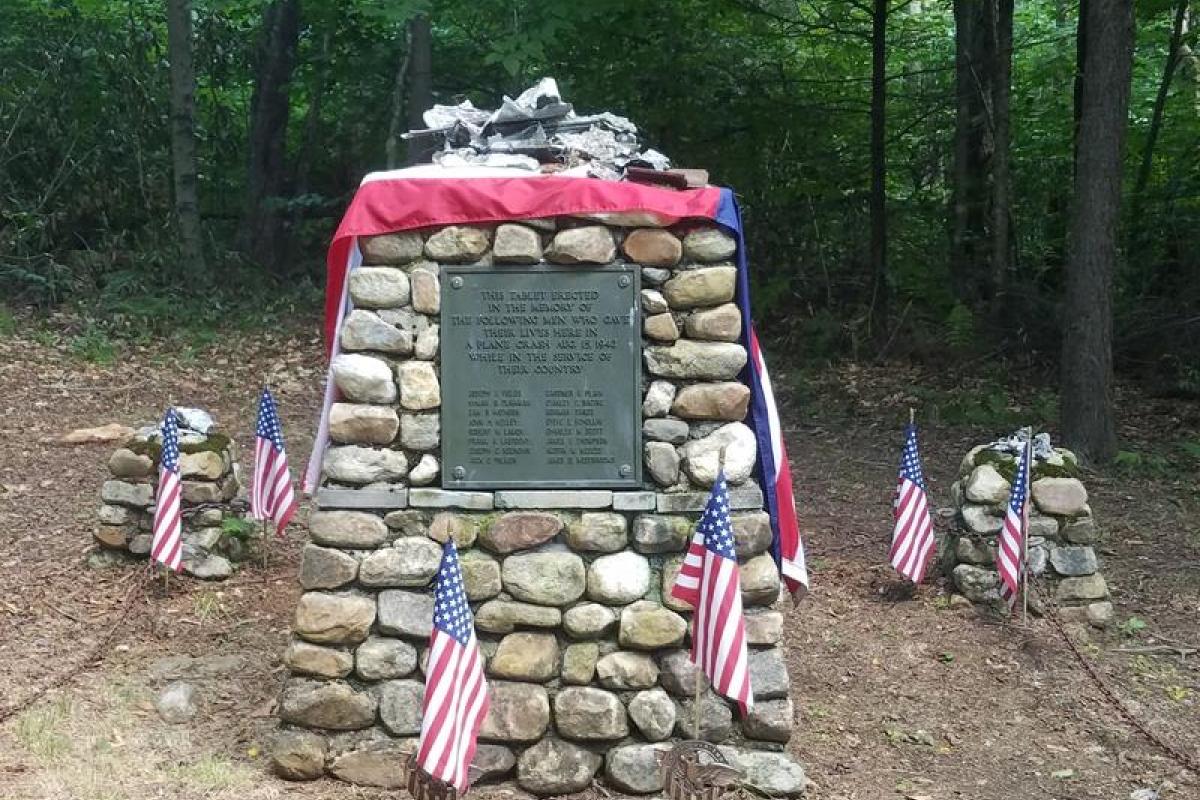 The monument to 16 soliders who died in a military plane crash in Peru, Massachusetts, on August 15, 1942.
The monument to 16 soliders who died in a military plane crash in Peru, Massachusetts, on August 15, 1942.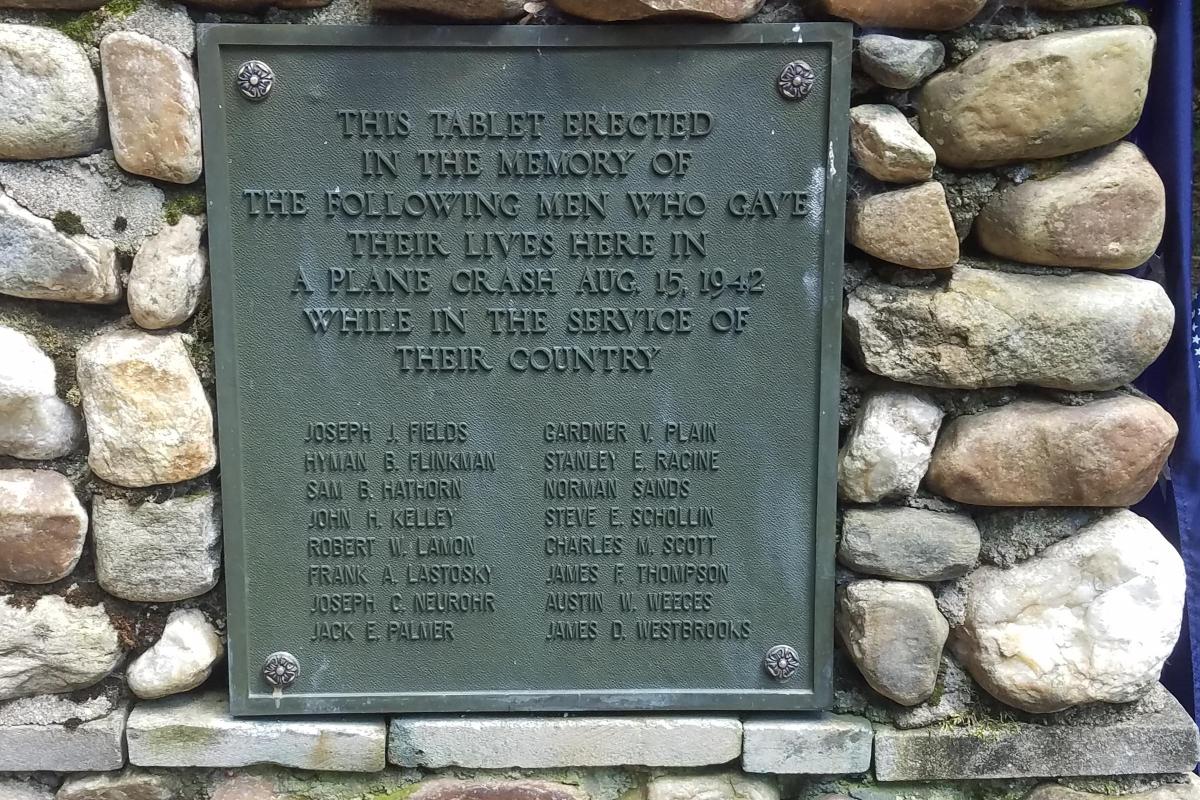 The names of the 16 men killed during a military plane crash in Peru, Massachusetts, on August 15, 1942.
The names of the 16 men killed during a military plane crash in Peru, Massachusetts, on August 15, 1942.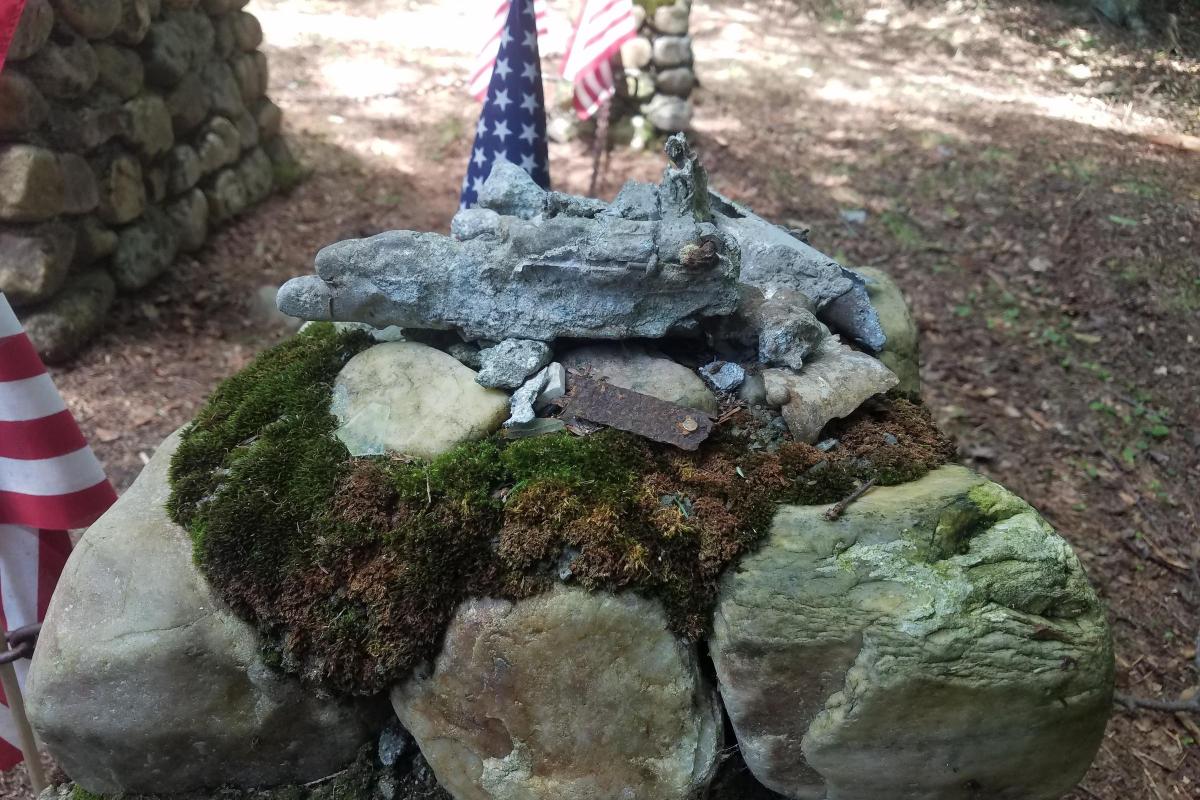 Pieces of debris from a C-53 military plane that crashed near Garnet Peak in Peru, Massachusetts, on August 15, 1942.
Pieces of debris from a C-53 military plane that crashed near Garnet Peak in Peru, Massachusetts, on August 15, 1942.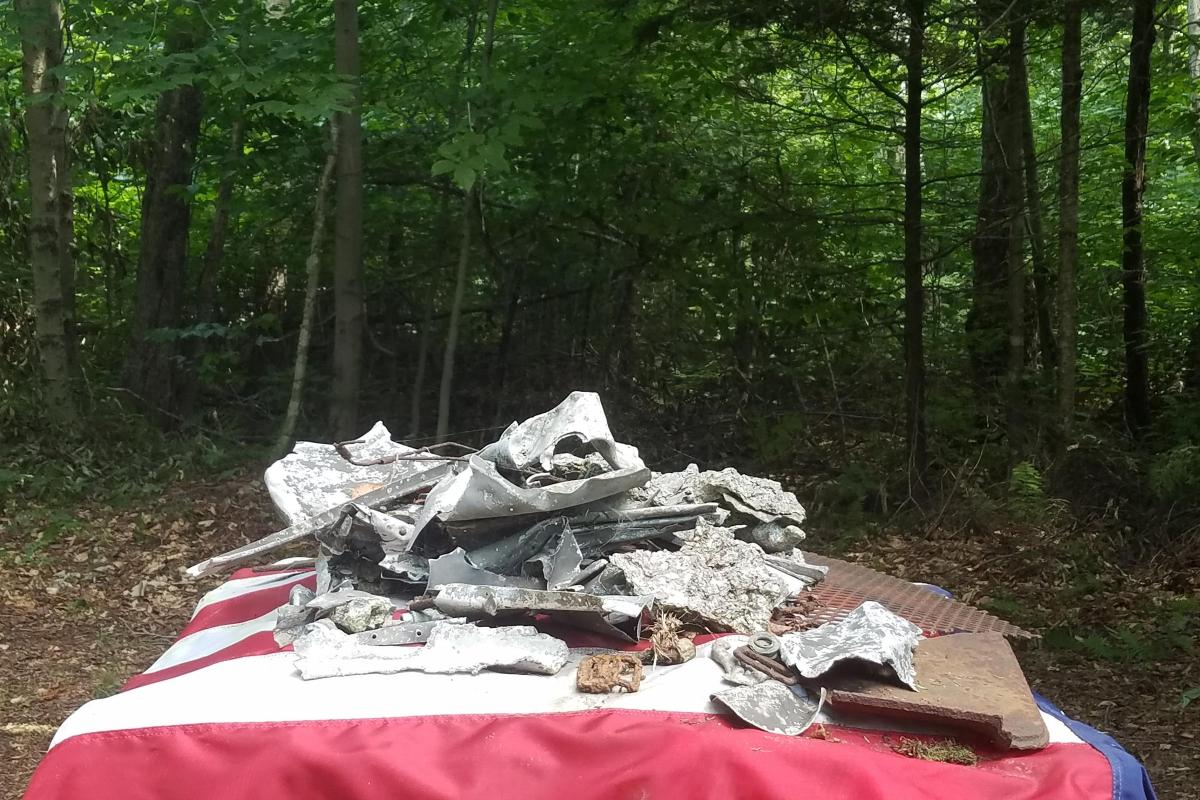 Pieces of debris from a C-53 military plane that crashed near Garnet Peak in Peru, Massachusetts, on August 15, 1942.
Pieces of debris from a C-53 military plane that crashed near Garnet Peak in Peru, Massachusetts, on August 15, 1942.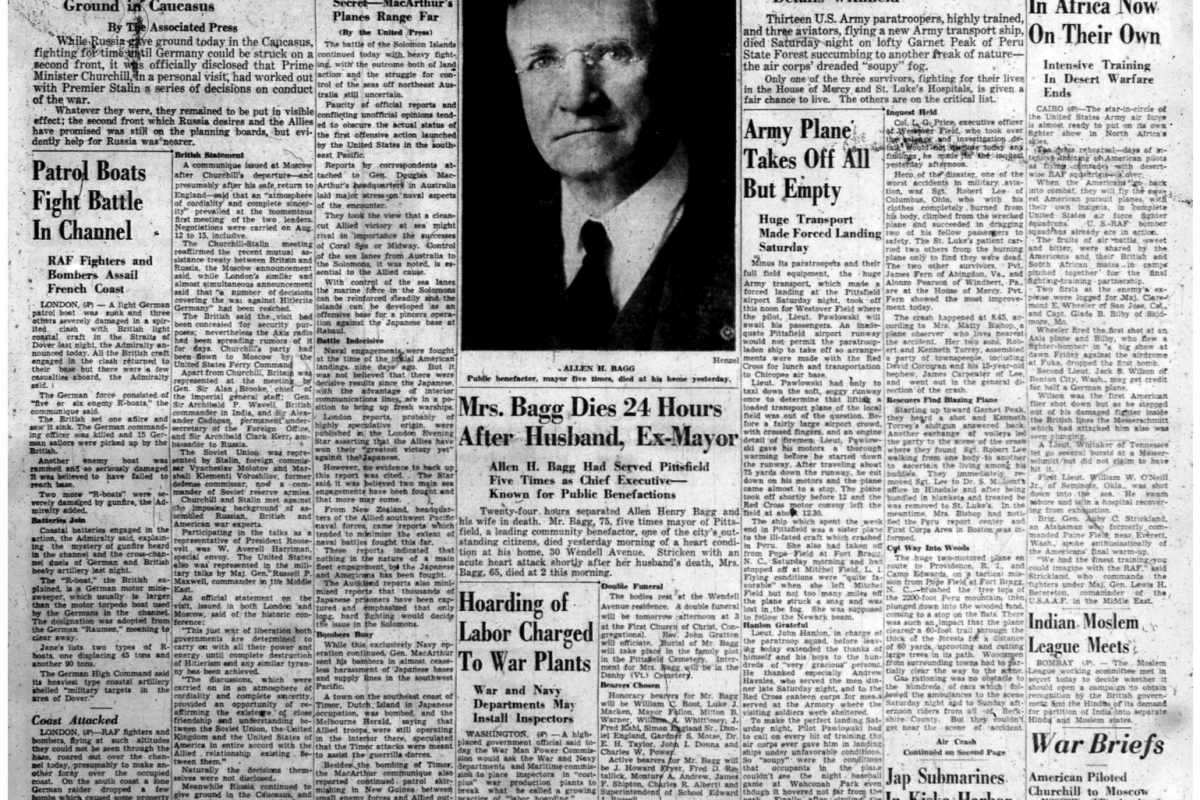 The front page of the Berkshire Eagle from August 17, 1942, reporting news of the plane crash in Peru, Massachusetts. Berkshire Eagle Archives at the Berkshire Anthenaeum
The front page of the Berkshire Eagle from August 17, 1942, reporting news of the plane crash in Peru, Massachusetts. Berkshire Eagle Archives at the Berkshire Anthenaeum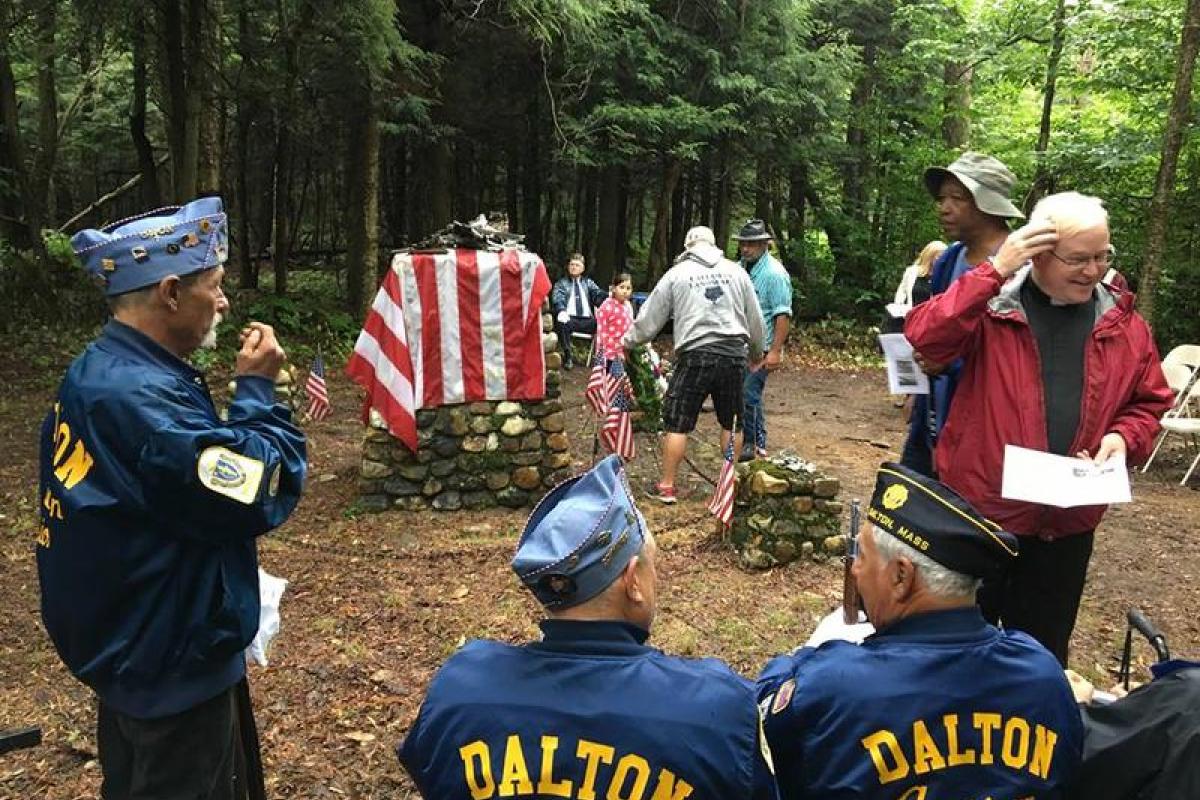 75th Anniversary - Peru residents remember paratroopers lost in 1942 plane crash on Garnet Peak
75th Anniversary - Peru residents remember paratroopers lost in 1942 plane crash on Garnet Peak

